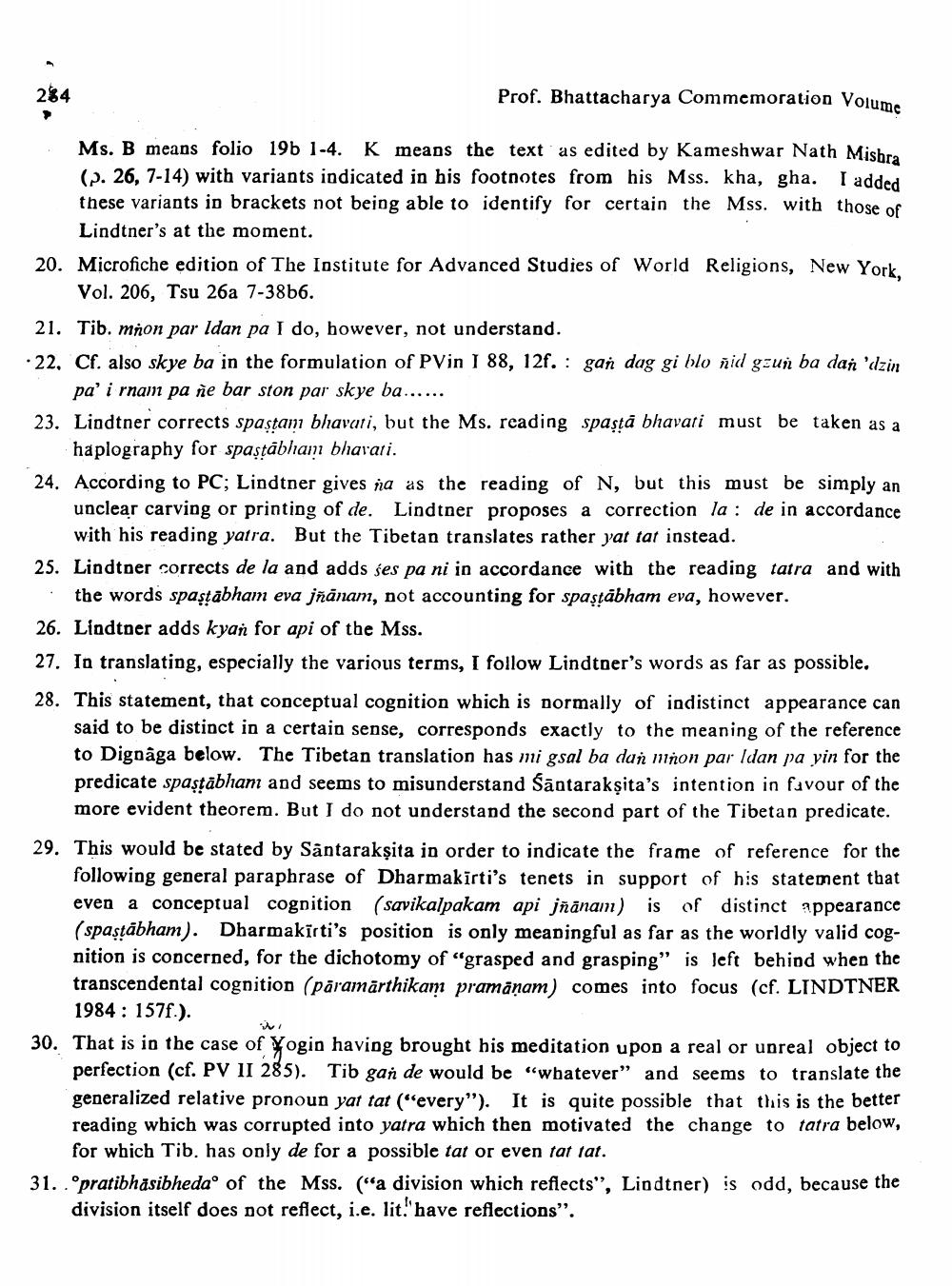________________
284
Prof. Bhattacharya Commemoration Volume
Ms. B means folio 19b 1-4. K means the text as edited by Kameshwar Nath Mishra (7. 26, 7-14) with variants indicated in his footnotes from his Mss. kha, gha. I added these variants in brackets not being able to identify for certain the Mss. with those of
Lindtner's at the moment. 20. Microfiche edition of The Institute for Advanced Studies of World Religions, New York,
Vol. 206, Tsu 26a 7-38b6. 21. Tib. mron par ldan pa I do, however, not understand. . 22Cf. also skye ba in the formulation of PVin I 88, 12f. : gan dag gi blo ñid gzun ba dan 'dzin
pa' i rnam pa ne bar ston par skye ba...... 23. Lindtner corrects spastam bhavati, but the Ms. reading spaștā bhavati must be taken as a
haplography for spastābham bharati. 24. According to PC; Lindtner gives na as the reading of N, but this must be simply an
unclear carving or printing of de. Lindtner proposes a correction la : de in accordance
with his reading yatra. But the Tibetan translates rather yat tat instead. 25. Lindtner corrects de la and adds ses pa ni in accordance with the reading tatra and with
the words spaștabham eva jñānam, not accounting for spaștábham eva, however. 26. Lindtner adds kyan for api of the Mss. 27. Io translating, especially the various terms, I follow Lindtner's words as far as possible. 28. This statement, that conceptual cognition which is normally of indistinct appearance can
said to be distinct in a certain sense, corresponds exactly to the meaning of the reference to Digoaga below. The Tibetan translation has mi gsal ba dan mñon par Idan pa yin for the predicate spaștābham and seems to misunderstand sāntarakṣita's intention in favour of the
more evident theorem. But I do not understand the second part of the Tibetan predicate. 29. This would be stated by Sântarakṣita in order to indicate the frame of reference for the
following general paraphrase of Dharmakirti's tenets in support of his statement that even a conceptual cognition (savikalpakam api jñānam) is of distinct appearance (spastābham). Dharmakirti's position is only meaningful as far as the worldly valid cognition is concerned, for the dichotomy of “grasped and grasping" is left behind when the transcendental cognition (päramärthikam pramānam) comes into focus (cf. LINDTNER
1984 : 157f.). 30. That is in the case of Yogin having brought his meditation upon a real or unreal object to
perfection (cf. PV II 285). Tib gan de would be “whatever” and seems to translate the generalized relative pronoun yat tat ("every”). It is quite possible that this is the better reading which was corrupted into yatra which then motivated the change to tatra below,
for which Tib, has only de for a possible tat or even tat fat. 31. pratibhasibhedao of the Mss. (“a division which reflects", Lindtner) is odd, because the
division itself does not reflect, i.e. lit.' have reflections".




